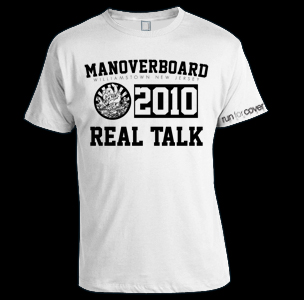DOUBLE PAGE SPREAD ANALYSIS
Colour Scheme and Overall Look
The choice of colours on this double page spread differ slightly from the colour scheme of the contents page and front cover of the issue; whereas the other pages used mainly black and red, no red is present on this page and instead the colour scheme consists of black, white and gold. This slight alteration in the colour way keeps the magazine interesting, and the addition of the gold colour complements the black-on-white text well and gives the page an almost vintage-like feel, which is appropriate due to the content of the article being on an old 80s band, ‘The Smiths’. The gold colour on the page is used as a background to a section titled “Dear Johnny”, which is full of other friends and collaborators, all from other old 80s bands, paying tribute to Johnny Marr, which therefore makes the vintage-like gold colour highly appropriate for this part of the feature. Most of the people reading this article, due to the band featured, will be at the older end of the target audience age category, which is another reason why such a colour scheme has been chosen for the spread.
Photography
All of the photography used on this particular double-page spread is from a selection of previously taken, older images. No brand new photography taken especially for the newly written feature appears to be present on the page. The nature of the photos varies from live photos, posed photoshoot pictures, and also candid photos from events. Rather than focusing on Johnny Marr himself, the photos tend to focus on his band, The Smiths, as a whole, due to the fact that this band was primarily what made Johnny Marr so famous. The reason behind the inclusion of older photos rather than a brand new photoshoot is most likely purely because real fans of The Smiths would rather look at past images of the band, in their prime and in their time, than newly posed photos as they do not have the same effect. This choice to use older photography is very well suited to the target audience of this particular article in the magazine as it caters for their particular wants and needs.
Writing Style
The writing style of the article on this double-page spread takes a much more formally written, serious and informative approach in comparison to some of the text on the front cover and contents pages. Elaborating on this, the level of vocabulary used is of a much higher standard, with the inclusion of certain words, phrases and sentence structures that the younger end of the target audience age category would perhaps not feel particularly comfortable with understanding or even reading, for example; “The quintissential axeman of his generation”, “He pioneered a arpeggiated, melodic style of playing” and “He had been the wunderkind of the Mancunian punk scene” and so on. However this higher-end writing style is, much like the rest of the page, very well suited to the target audience of this particular article who are most likely to be long-term fans of The Smiths and Johnny Marr himself and will be most interested in reading a very well-written article about him as a musician and about his career. They may feel that the more well-written the article is, the more respect that the magazine has towards the artist, which will be important to the target audience.
Text/Picture Ratio
In this instance, the text/picture ratio is highly different to that of the contents page. Whereas the contents page was designed to suit a wider target audience who would prefer a higher ratio of pictures to text, this particular double page spread on Johnny Marr is designed to suit a specific and more narrowed sample of readers who would be more likely to appreciate a higher ratio of text on the page as they would rather have an actual article to sit and read rather than simply a page covered with photos that they can simply glance at. It is also worth noting that, as previously mentioned, the pictures on the page are a selection of older photography rather than a brand new photoshoot, so this may also be part of the reason that less pictures were used in comparison to the amount of text, as the editors will have had a more limited choice when picking out photos to use on the page.
Fonts
Similar to the change in colour scheme, there has been a slight change in font from the contents page to the double page spread. Whereas the contents page used a more basic, neutral and approachable font, the double page spread’s main body of text is written with a more formal font, similar to that of a newspaper. This will again be due to the age and more serious interests of the article’s specific target audience, and the more formal text complements the vintage-like colour scheme and overall look of the spread very well.



















